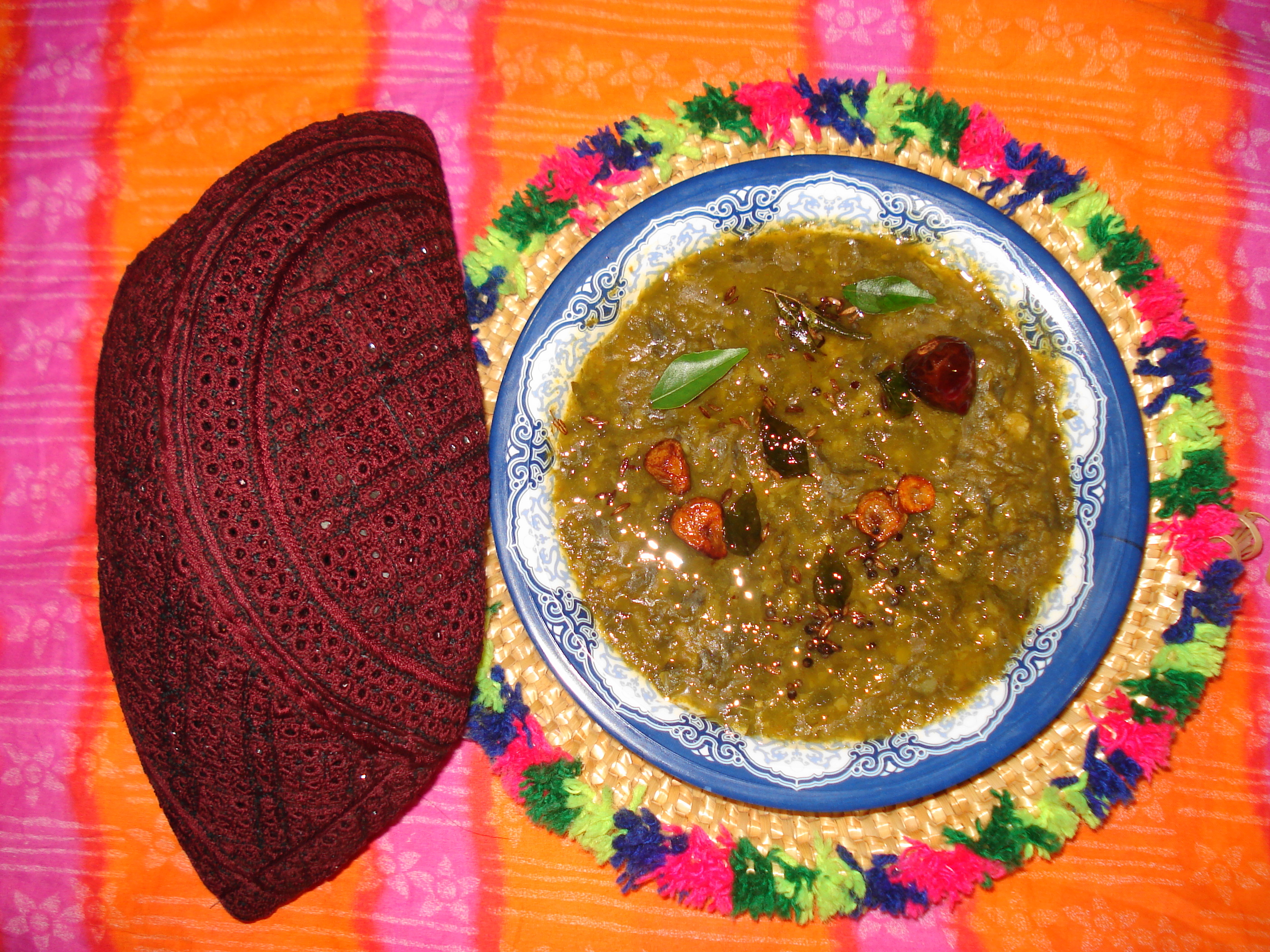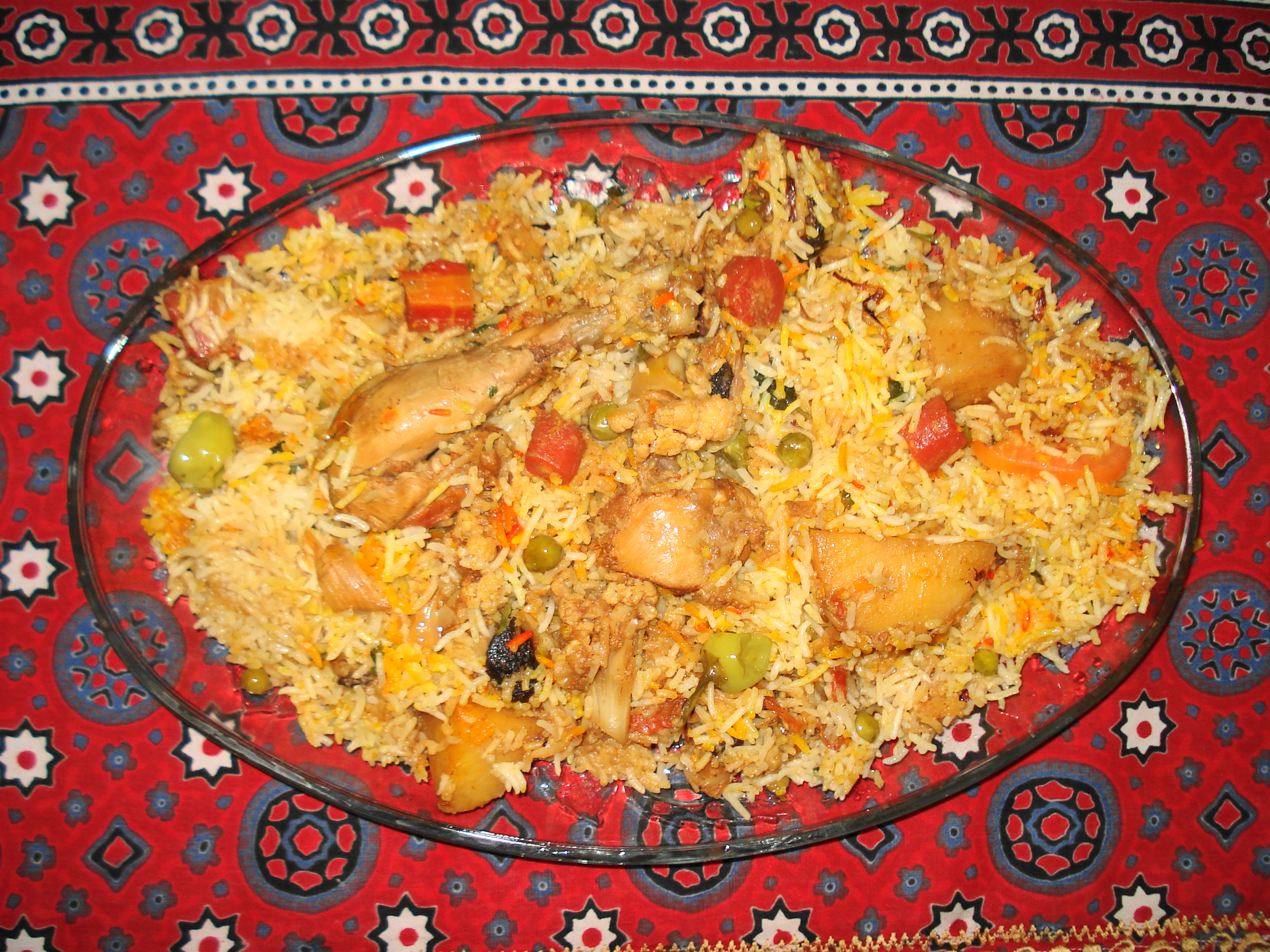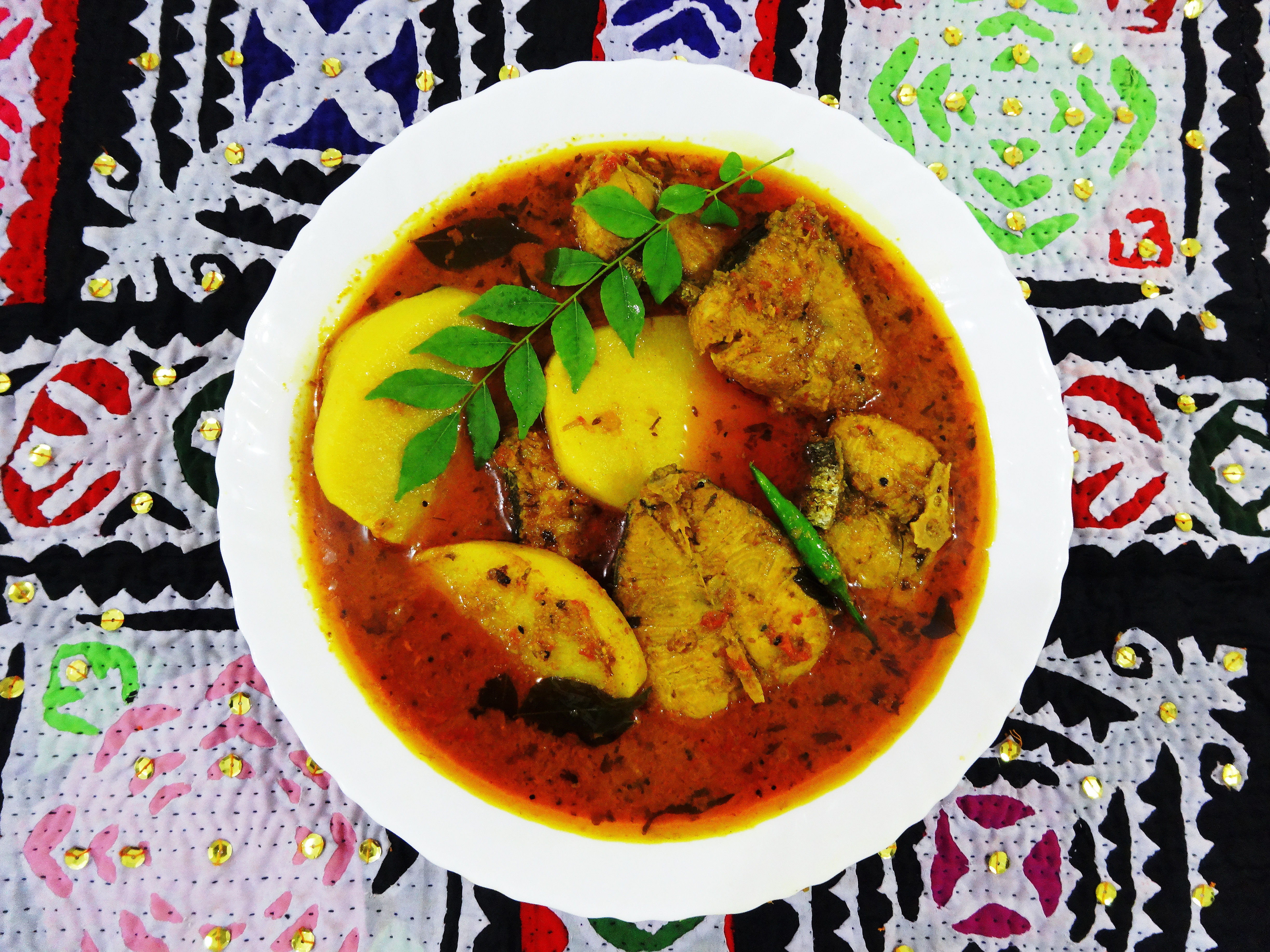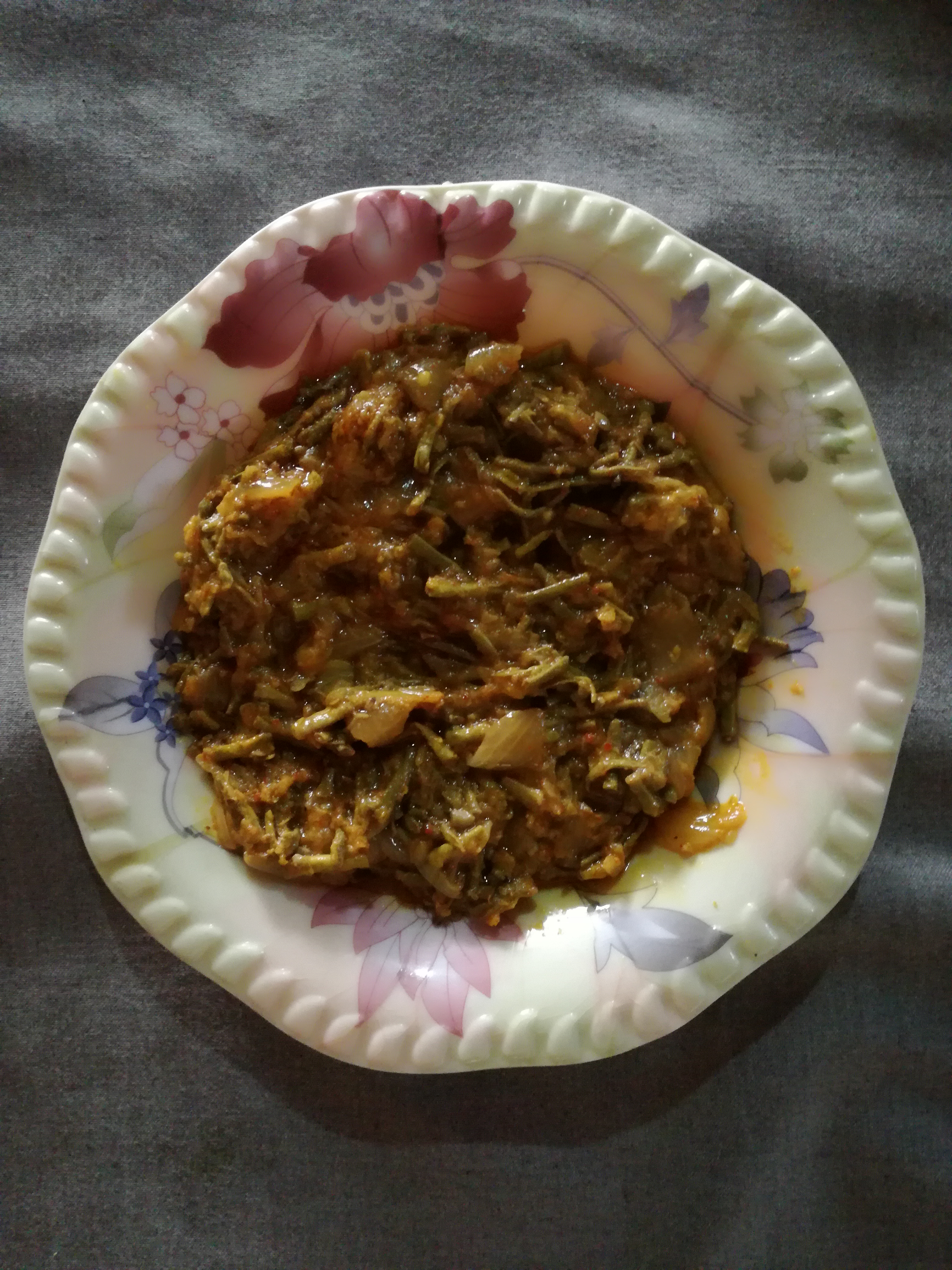Sindhi cuisine on:
[Wikipedia]
[Google]
[Amazon]
Sindhi cuisine ( Sindhi: سنڌي کاڌا) refers to the distinct native cuisine of the



 * Sindhi Kadi is a unique and special dish prepared on festive occasions specially by Sindhis residing in India. It consists of a thick spicy gravy made from chick pea flour unlike buttermilk usually used for kadi preparation along with seasonal vegetables. It is served hot with rice.
* Mitho lolo is also served with chilled buttermilk called Matho on various occasions.
* A special sweet dish called 'Kheer Kharkun' are prepared and served on
* Sindhi Kadi is a unique and special dish prepared on festive occasions specially by Sindhis residing in India. It consists of a thick spicy gravy made from chick pea flour unlike buttermilk usually used for kadi preparation along with seasonal vegetables. It is served hot with rice.
* Mitho lolo is also served with chilled buttermilk called Matho on various occasions.
* A special sweet dish called 'Kheer Kharkun' are prepared and served on  *Pallo Machi is a popular Sindhi delicacy, is Hilsha fish prepared with numerous cooking methods. It can be deep fried and garnished with local spices, can be cooked with onions and potatoes into a traditional fish meal or barbequed. The fish often has roe, which is called "aani" in Sindhi and is enjoyed as a delicacy. Often fried alongside the palla and served with the fish fillets.
* Palli, is a saag or leafy green from the Chickpeas, and is enjoyed either cooked by itself like spinach or with fish cooked in the palli and called "Machi Palli". The saag has a unique flavor and is quite different from spinach or mustard saag and has a slightly sour and salty taste to it. It can take getting used to for the uninitiated.
*Pallo Machi is a popular Sindhi delicacy, is Hilsha fish prepared with numerous cooking methods. It can be deep fried and garnished with local spices, can be cooked with onions and potatoes into a traditional fish meal or barbequed. The fish often has roe, which is called "aani" in Sindhi and is enjoyed as a delicacy. Often fried alongside the palla and served with the fish fillets.
* Palli, is a saag or leafy green from the Chickpeas, and is enjoyed either cooked by itself like spinach or with fish cooked in the palli and called "Machi Palli". The saag has a unique flavor and is quite different from spinach or mustard saag and has a slightly sour and salty taste to it. It can take getting used to for the uninitiated.


 Bhee (simply means '
Bhee (simply means '
 * Thadal (famous Sindhi drink made from almonds and poppy seeds - khashkhaash).
* Khirni (hot drink made with milk, flavours of cardamoms and saffron).
* Sharbat (drink made from rose petals or sandal wood ).
* Falooda (vermicelli and ice on top of an ice cream)
*
* Thadal (famous Sindhi drink made from almonds and poppy seeds - khashkhaash).
* Khirni (hot drink made with milk, flavours of cardamoms and saffron).
* Sharbat (drink made from rose petals or sandal wood ).
* Falooda (vermicelli and ice on top of an ice cream)
*
Sindhi people
Sindhis ( sd, سنڌي Perso-Arabic: सिन्धी Devanagari; ) are an Indo-Aryan ethnic group who speak the Sindhi language and are native to the province of Sindh in Pakistan. After the partition of British Indian empire in 1947, m ...
from Sindh
Sindh (; ; ur, , ; historically romanized as Sind) is one of the four provinces of Pakistan. Located in the southeastern region of the country, Sindh is the third-largest province of Pakistan by land area and the second-largest province ...
, Pakistan
Pakistan ( ur, ), officially the Islamic Republic of Pakistan ( ur, , label=none), is a country in South Asia. It is the world's List of countries and dependencies by population, fifth-most populous country, with a population of almost 24 ...
. Sindhi cuisine has been influenced by Central Asian, Iranian, Mughal food traditions. It is mostly a non-vegetarian cuisine, with even Sindhi Hindus widely accepting of meat consumption. The daily food in most Sindh
Sindh (; ; ur, , ; historically romanized as Sind) is one of the four provinces of Pakistan. Located in the southeastern region of the country, Sindh is the third-largest province of Pakistan by land area and the second-largest province ...
i households consists of wheat
Wheat is a grass widely cultivated for its seed, a cereal grain that is a worldwide staple food. The many species of wheat together make up the genus ''Triticum'' ; the most widely grown is common wheat (''T. aestivum''). The archaeologi ...
-based flat-bread (phulka
Chapati (alternatively spelled chapatti, chappati, chapathi, or chappathi; pronounced as IAST: ), also known as ''roti'', ''rotli'', ''safati'', ''shabaati'', ''phulka'', (in East Africa) ''chapo'', (in Marathi) ''poli'', and (in the Maldives) ...
) and rice accompanied by two dishes, one gravy
Gravy is a sauce often made from the juices of meats that run naturally during cooking and often thickened with wheat flour or corn starch for added texture. The gravy may be further coloured and flavoured with gravy salt (a simple mix of salt an ...
and one dry with curd, papad or pickle. Freshwater fish and a wide variety of vegetables are usually used in Sindhi cuisine. Restaurants specializing in Sindhi cuisine are rare, although it is found at truck stops in rural areas of Sindh province, and in a few restaurants in urban Sindh.
Historical influences
The arrival ofIslam
Islam (; ar, ۘالِإسلَام, , ) is an Abrahamic religions, Abrahamic Monotheism#Islam, monotheistic religion centred primarily around the Quran, a religious text considered by Muslims to be the direct word of God in Islam, God (or ...
within India
India, officially the Republic of India (Hindi: ), is a country in South Asia. It is the seventh-largest country by area, the second-most populous country, and the most populous democracy in the world. Bounded by the Indian Ocean on the so ...
influenced the local cuisine to a great degree. Since Muslim
Muslims ( ar, المسلمون, , ) are people who adhere to Islam, a monotheistic religion belonging to the Abrahamic tradition. They consider the Quran, the foundational religious text of Islam, to be the verbatim word of the God of Abrah ...
s are forbidden to eat pork or consume alcohol and the Halal
''Halal'' (; ar, حلال, ) is an Arabic word that translates to "permissible" in English. In the Quran, the word ''halal'' is contrasted with ''haram'' (forbidden). This binary opposition was elaborated into a more complex classification kno ...
dietary guidelines are strictly observed, Muslim Sindhis
Sindhis ( sd, سنڌي Perso-Arabic: सिन्धी Devanagari; ) are an Indo-Aryan ethnic group who speak the Sindhi language and are native to the province of Sindh in Pakistan. After the partition of British Indian empire in 1947, man ...
focus on ingredients such as beef
Beef is the culinary name for meat from cattle (''Bos taurus'').
In prehistoric times, humankind hunted aurochs and later domesticated them. Since that time, numerous breeds of cattle have been bred specifically for the quality or quantity ...
, lamb
Lamb or The Lamb may refer to:
* A young sheep
* Lamb and mutton, the meat of sheep
Arts and media Film, television, and theatre
* ''The Lamb'' (1915 film), a silent film starring Douglas Fairbanks Sr. in his screen debut
* ''The Lamb'' (1918 ...
, chicken
The chicken (''Gallus gallus domesticus'') is a domesticated junglefowl species, with attributes of wild species such as the grey and the Ceylon junglefowl that are originally from Southeastern Asia. Rooster or cock is a term for an adult m ...
, fish
Fish are aquatic, craniate, gill-bearing animals that lack limbs with digits. Included in this definition are the living hagfish, lampreys, and cartilaginous and bony fish as well as various extinct related groups. Approximately 95% of li ...
, vegetables
Vegetables are parts of plants that are consumed by humans or other animals as food. The original meaning is still commonly used and is applied to plants collectively to refer to all edible plant matter, including the flowers, fruits, stems, ...
and traditional fruit
In botany, a fruit is the seed-bearing structure in flowering plants that is formed from the ovary after flowering.
Fruits are the means by which flowering plants (also known as angiosperms) disseminate their seeds. Edible fruits in particu ...
and dairy
A dairy is a business enterprise established for the harvesting or processing (or both) of animal milk – mostly from cows or buffaloes, but also from goats, sheep, horses, or camels – for human consumption. A dairy is typically located on ...
. Hindu Sindhi cuisine is almost identical with the difference that beef is omitted. The influence of Central Asia
Central Asia, also known as Middle Asia, is a subregion, region of Asia that stretches from the Caspian Sea in the west to western China and Mongolia in the east, and from Afghanistan and Iran in the south to Russia in the north. It includes t ...
n, South Asia
South Asia is the southern subregion of Asia, which is defined in both geographical and ethno-cultural terms. The region consists of the countries of Afghanistan, Bangladesh, Bhutan, India, Maldives, Nepal, Pakistan, and Sri Lanka.;;;;;;;; ...
n and Middle East
The Middle East ( ar, الشرق الأوسط, ISO 233: ) is a geopolitical region commonly encompassing Arabian Peninsula, Arabia (including the Arabian Peninsula and Bahrain), Anatolia, Asia Minor (Asian part of Turkey except Hatay Pro ...
ern cuisine in Sindhi food is ubiquitous. Sindhi cuisine was also found in India
India, officially the Republic of India (Hindi: ), is a country in South Asia. It is the seventh-largest country by area, the second-most populous country, and the most populous democracy in the world. Bounded by the Indian Ocean on the so ...
, where many Sindhi Hindus
Sindhi Hindus are Sindhis who follow the Hindu religion, whose origins lie in the Sindh region and spread across modern-day India and Pakistani Sindh province. After the Partition of India in 1947, many Sindhi Hindus were among those who fled ...
migrated following the Partition of India
The Partition of British India in 1947 was the Partition (politics), change of political borders and the division of other assets that accompanied the dissolution of the British Raj in South Asia and the creation of two independent dominions: ...
in 1947. Before Independence, the State of Sindh was under Bombay Presidency
The Bombay Presidency or Bombay Province, also called Bombay and Sind (1843–1936), was an administrative subdivision (province) of British India, with its capital in the city that came up over the seven islands of Bombay. The first mainl ...
.

Food for special occasions
Certain dishes are served on special occasions such as Diwali a Bahji (vegetable dish) called Chiti-Kuni is made with seven vegetables. Special dishes are also served on recovery from serious illness for example when someone makes a full recovery from Chicken Pox, it is common to make an offering and make "mitho lolo", a sweet griddle-roasted flatbread: the dough is wheat flour mixed with oil (orghee
Ghee is a type of clarified butter, originating from India. It is commonly used in India for cooking, as a traditional medicine, and for religious rituals.
Description
Ghee is typically prepared by simmering butter, which is churned from c ...
) and sugar syrup flavored with ground cardamom.
* Sai bhaji
Sai bhaji ( sd, سائي ڀاڄي) is a Sindhi vegetarian curry, consisting of ''dal'' (lentils), ''palak'' ( spinach) and other vegetables. It forms a staple part of the local cuisine and is considered a rich source of nutrition due to its mix o ...
chawal, a popular dish from Sindh consists of white steamed rice served with spinach curry which is given a 'tarka' with tomatoes, onions and garlic.
* Dal pakwan (mostly consumed by Sindhi hindus)
*Koki is another popular Sindhi flat-bread that is prepared with wheat flour and goes well with any dal, sabzi or even curd or chai.
* Seviyan (Vermicelli), typically served as a sweetened (sometimes milk-based) dessert, is popular: Muslim Sindhis serve it on Bakra-Eid and Eid ul-Fitr
, nickname = Festival of Breaking the Fast, Lesser Eid, Sweet Eid, Sugar Feast
, observedby = Muslims
, type = Islamic
, longtype = Islamic
, significance = Commemoration to mark the end of fasting in Ramadan
, dat ...
. On special religious occasions, mitho lolo, accompanied with milk, is given to the poor.
Eid ul-Fitr
, nickname = Festival of Breaking the Fast, Lesser Eid, Sweet Eid, Sugar Feast
, observedby = Muslims
, type = Islamic
, longtype = Islamic
, significance = Commemoration to mark the end of fasting in Ramadan
, dat ...
, it is prepared by mixing dates and milk, and slowly simmering the mixture for few hours. The dish is eaten hot in winters and cold in summers.
* Taryal Patata also called Took Aloo, a staple of Sindhi diet, is a form of thinly sliced, pan fried or deep fried potatoes with local spices. They are consumed in most rural households typically at dinner but can be consumed even for breakfast and lunch alongside other meals. One popular Sindhi way of having "patatas" is to eat it with plain white rice with daal to accompany it.


Meals
lotus root
''Nelumbo nucifera'', also known as sacred lotus, Laxmi lotus, Indian lotus, or simply lotus, is one of two extant species of aquatic plant in the family Nelumbonaceae. It is sometimes colloquially called a water lily, though this more often re ...
' in English). A high quality lotus root is grown in the north of Sindh which is then cooked in clay-pot using various spices, which then results in an excellent delicacy that is famous all over Pakistan. Sindhi Briyani, Sindhi Curry, Sabu Dal Chawal (yellow daal with rice).
Drinks
Lassi
Lassi () is a regional name for buttermilk, the traditional dahi (yogurt)–based drink, consumed in the South Asian region. Lassi is a blend of yogurt, water, spices, and sometimes fruit. Salty lassi is similar to doogh, while modern sweet la ...
( dahi (yogurt)-based traditional drink
A drink or beverage is a liquid intended for human consumption. In addition to their basic function of satisfying thirst, drinks play important roles in human culture. Common types of drinks include plain drinking water, milk, juice, smoothies a ...
)
Translations
This section provides the translations betweenUrdu
Urdu (;"Urdu"
''
''
Hindi
Hindi (Devanāgarī: or , ), or more precisely Modern Standard Hindi (Devanagari: ), is an Indo-Aryan language spoken chiefly in the Hindi Belt region encompassing parts of northern, central, eastern, and western India. Hindi has been de ...
, Sindhi and English
English usually refers to:
* English language
* English people
English may also refer to:
Peoples, culture, and language
* ''English'', an adjective for something of, from, or related to England
** English national ide ...
(British and American) cooking terms of common Sindhi food.
There are occasional differences in Sindhi dialects for instance Hyderabadi Sindhi will refer to an egg as 'bedo' however Sindhis from other parts will refer to it as 'ando'.
Herbs
Spices
Fruit, Vegetable and Pulses
Nuts
Other
Vegetarian cuisine
Certain sects of the Sindhi community arevegetarians
Vegetarianism is the practice of abstaining from the consumption of meat (red meat, poultry, seafood, insects, and the flesh of any other animal). It may also include abstaining from eating all by-products of animal slaughter.
Vegetarianism ma ...
. The Thathai, Halai and Kutchi Bhatias are followers of Vallabh Acharya. He put forward a way to worship Sri Krishna
Krishna (; sa, कृष्ण ) is a major deity in Hinduism. He is worshipped as the eighth avatar of Vishnu and also as the Supreme god in his own right. He is the god of protection, compassion, tenderness, and love; and is one o ...
called Pushtimarg
Pushtimarg (), also known as ''Pushtimarg sampradaya'' or ''Vallabha sampradaya'', is a subtradition of the Rudra Sampradaya (Vaishnavism). It was founded in the early 16th century by Vallabhacharya (1479–1531) and is focused on Krishna.
. They are strict vegetarians who do not eat even onions
An onion (''Allium cepa'' L., from Latin ''cepa'' meaning "onion"), also known as the bulb onion or common onion, is a vegetable that is the most widely cultivated species of the genus ''Allium''. The shallot is a botanical variety of the onion ...
and garlic
Garlic (''Allium sativum'') is a species of bulbous flowering plant in the genus ''Allium''. Its close relatives include the onion, shallot, leek, chive, Allium fistulosum, Welsh onion and Allium chinense, Chinese onion. It is native to South A ...
and are devoted to Srinathji, the child form of Sri Krishna.
See also
*Indian cuisine
Indian cuisine consists of a variety of regional and traditional cuisines native to India. Given the diversity in soil, climate, culture, ethnic groups, and occupations, these cuisines vary substantially and use locally available spices, he ...
* Pakistani cuisine
Pakistani cuisine ( ur, , romanized: ''pākistānī pakwān'') can be characterized by a blend of various regional cooking traditions from South Asia, Central and Western Asia, as well as elements from its Mughal legacy. The country's va ...
References
External links
{{DEFAULTSORT:Sindhi Cuisine Cuisine by ethnicity Indian cuisine Pakistani cuisine